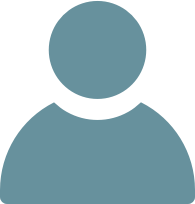Diabetes Management
Understanding Estimated Average Glucose (eAG): What Does It Mean?
3 min read
By Apollo 24|7, Published on - 15 September 2023
Share this article
0
0 like

Managing diabetes involves keeping a close eye on blood sugar levels. Estimated Average Glucose (eAG), or HbA1c (%) is used by healthcare providers and individuals with diabetes to measure long-term control. In this blog, we shall explore what eAG means, how it relates to your regular blood sugar measurements, and why it is a crucial tool in diabetes management.
What Is eAG?
Estimated Average Glucose (eAG) is a numerical value that provides an estimate of your average blood sugar level over a certain period, typically over the past 2 to 3 months. It's expressed in milligrams per deciliter (mg/dL) or millimoles per liter (mmol/L).
eAG vs. A1C: What's the Difference?
eAG and A1C are both important measurements in diabetes management, but they show information in different ways. A1C is a percentage that tells you the average amount of sugar attached to your red blood cells over the last 2-3 months. On the other hand, eAG gives you the same kind of average blood sugar information, but it's presented in the same units you see when you check your blood sugar every day. This makes it simpler for people to connect their regular blood sugar tests with their long-term control.
Why is eAG Important?
eAG serves several important purposes in diabetes management:
· Understanding Control: It offers a more relatable perspective on your long-term blood sugar control. Instead of percentages, you see a number that you are more familiar with. This makes it easier to grasp how your diabetes management is progressing.
· Treatment Adjustments: eAG helps healthcare providers determine whether your current treatment plan is effective. If your eAG is consistently above or below your target range, adjustments can be made to your medication, diet, or exercise regimen.
· Goal Setting: It allows you to set realistic blood sugar targets. By knowing your eAG, you can work with your healthcare team to establish specific goals for better control.
· Motivation: Tracking eAG provides motivation to maintain healthy habits. When you see improvements in your eAG, it's a tangible indicator that your efforts are paying off.
How Is eAG Calculated?
The formula for calculating eAG is derived from the A1C value using the following equation:
eAG (mg/dL) = (28.7 × A1C) - 46.7
For those using the mmol/L unit, the equation is slightly different:
eAG (mmol/L) = (1.59 × A1C) - 2.59
Healthcare providers often use eAG to complement A1C results, offering a more comprehensive picture of your diabetes management.
Conclusion
Estimated Average Glucose (eAG) is a valuable tool that provides a clear and relatable way to assess your long-term blood sugar control, enabling better communication with healthcare providers and more effective diabetes management. By understanding and tracking your eAG, you can make informed decisions about your treatment plan, set realistic goals, and take steps towards a healthier and well-managed life. Always consult your healthcare provider for guidance on interpreting and using eAG data to optimize your diabetes care.
Diabetes Management
Consult Top Diabetologists
View AllLeave Comment
Recommended for you

Diabetes Management
Bariatric Surgery and Diabetes: Who Can Benefit?
Bariatric surgery can be beneficial for individuals with obesity and type 2 diabetes. Research suggests that this surgical intervention can lead to significant weight loss and improvement in diabetes control. Candidates for bariatric surgery typically include individuals with a body mass index (BMI) over 35 and poorly controlled blood sugar levels.

Diabetes Management
8 Important Tests for People with Type 2 Diabetes
Regular monitoring of various health parameters is extremely crucial for individuals with diabetes to prevent health complications. These include the HbA1c test to assess blood glucose management, blood pressure checks to monitor cardiovascular health, lipid profile tests to evaluate cholesterol levels, electrocardiograms to detect heart issues, eye examinations to prevent diabetic eye complications. Regular check-ups can help diabetics to effectively manage their overall health.

Diabetes Management
How To Prevent Diabetes During Pregancy?
Learn about effective strategies and lifestyle factors to prevent diabetes during pregnancy. Discover the latest guidelines, new technologies and expert advice on managing gestational diabetes.
Subscribe
Sign up for our free Health Library Daily Newsletter
Get doctor-approved health tips, news, and more.
Visual Stories

8 Fruits That are Incredibly Healthy for Diabetes
Tap to continue exploring
Recommended for you

Diabetes Management
Bariatric Surgery and Diabetes: Who Can Benefit?
Bariatric surgery can be beneficial for individuals with obesity and type 2 diabetes. Research suggests that this surgical intervention can lead to significant weight loss and improvement in diabetes control. Candidates for bariatric surgery typically include individuals with a body mass index (BMI) over 35 and poorly controlled blood sugar levels.

Diabetes Management
8 Important Tests for People with Type 2 Diabetes
Regular monitoring of various health parameters is extremely crucial for individuals with diabetes to prevent health complications. These include the HbA1c test to assess blood glucose management, blood pressure checks to monitor cardiovascular health, lipid profile tests to evaluate cholesterol levels, electrocardiograms to detect heart issues, eye examinations to prevent diabetic eye complications. Regular check-ups can help diabetics to effectively manage their overall health.

Diabetes Management
How To Prevent Diabetes During Pregancy?
Learn about effective strategies and lifestyle factors to prevent diabetes during pregnancy. Discover the latest guidelines, new technologies and expert advice on managing gestational diabetes.
